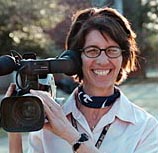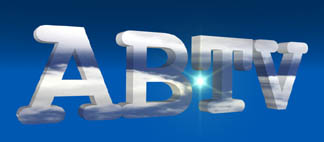"Thirty yards from where we're sitting, the remains of five people have been found," declared FBI Director Louis J. Freeh, on a bright cold winter day in Juarez, Mexico. It was a circus of sorts, as news conferences often are, and this one was even held under a tent.
It was 8am Friday morning, and at the bidding of the authorities the press obediently queued up on a ridge outside the gated ranch. A bilingual soldier announced the press rules, "Each team may have three members: one for camera, one to help, and one reporter." Our team from ABC News had nine members: two crews (one from Mexico City and one from Dallas), one correspondent, a lead producer, and three other field producers. Our correspondent stood with the crew from Mexico, I was set to enter with the Dallas crew, and the two remaining field producers joined the one-man-band teams from our El Paso and Albuquerque affiliate stations. I considered a strategy for our lead producer while he stood with us. After a couple of hours of banter--punctuated by a flurry of activity when several helicopters landed on the ranch--we were allowed through an iron gate. David Herndon, the ABC producer in line ahead of me, showed his ID to the lawman at the gate. "ABC is already in," the Federale informed him. "Oh, they were ABC en espanol," I piped up, in my rendition of Spanglish, "and he is ABC in English." No problema. I used my ABTV press credential, and hoped my crew had their ABC IDs tucked away somewhere. This worked fine, and we went to a holding area where we were extensively patted down, and our equipment was inspected. We were issued credentials (mine read Prensa 39), and allowed to stand behind an imaginary line, a few hundred yards above the press tent area. A table was set up with coffee and cookies. Eventually, we made the ritual controlled stampede to the press tent. It was a horrendous gang bang as crews jockeyed for position under the big top, and decided whether to mic the loudspeakers, or find a slot in the mult. No one was allowed near the table where a half dozen name cards stood waiting. Freeh arrived by motorcade, and took a brief tour of the crime scenes beyond the reach of our cameras. Under the tent, a yellow note pad was circulated. Members of the press could sign up if they wanted to ask questions.
After the teenage ushers finished their work at the Q&A session, the Federales escorted groups of TV and still photographers to a grave site on the ranch. Back at the ranch gate, a furious wind kicked up a hugh dust storm--though it didn't prevent some of the world-traveling media from stopping to take a snapshot of themselves with the ushers. Shallow graves and drug cartels made headlines that day. But the dozen ushers in miniskirts were NEW at the news conference, as far as I'm concerned. |

 "I
don't have a partner anywhere in the world who I trust more," said Freeh,
of Mexico's Attorney General Jorge Marrazo Cuellar, seated on Freeh's right.
The investigation leading to the discovery of these presumed victims of
violence performed by a powerful drug cartel took place on Mexican turf,
and this is where the press tried very hard to cooperate with the well-armed
Mexican federal police who were in control.
"I
don't have a partner anywhere in the world who I trust more," said Freeh,
of Mexico's Attorney General Jorge Marrazo Cuellar, seated on Freeh's right.
The investigation leading to the discovery of these presumed victims of
violence performed by a powerful drug cartel took place on Mexican turf,
and this is where the press tried very hard to cooperate with the well-armed
Mexican federal police who were in control.
 After
opening statements at the news conference, someone checked the list of
journalists, inviting each one, in order, to speak. Then a teenager in
a black miniskirt brought a microphone to each person with a question.
This was new to me. A news conference with ushers!! It reminded me of something
out of the seventies, like an EST seminar.
After
opening statements at the news conference, someone checked the list of
journalists, inviting each one, in order, to speak. Then a teenager in
a black miniskirt brought a microphone to each person with a question.
This was new to me. A news conference with ushers!! It reminded me of something
out of the seventies, like an EST seminar.
